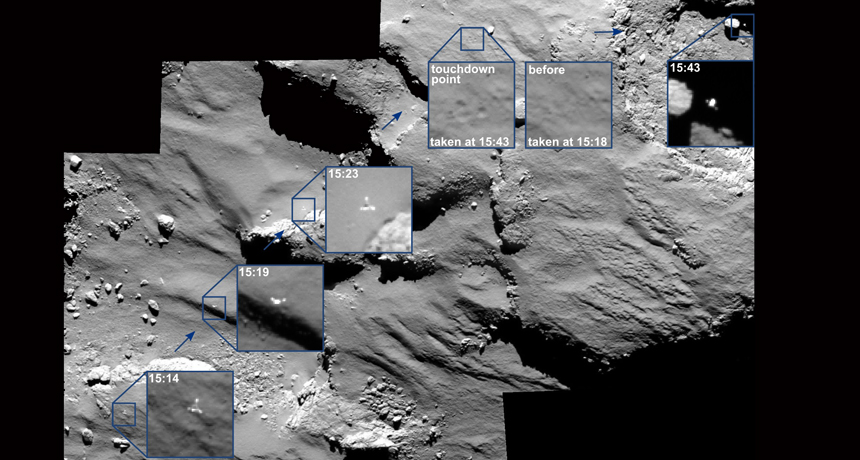Philae lander sent in a surprise before going to sleep

A camera aboard the Rosetta spacecraft, which is orbiting comet 67P/Churyumov-Gerasimenko, snapped images of the lander Philae during its first touchdown on the dusty, icy world.
MPS for OSIRIS Team MPS/UPD/LAM/IAA/SSO/INTA/UPM/DASP/IDA/Rosetta/ESA







